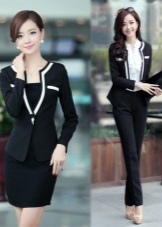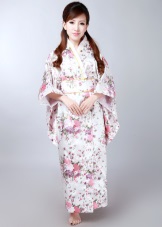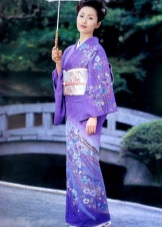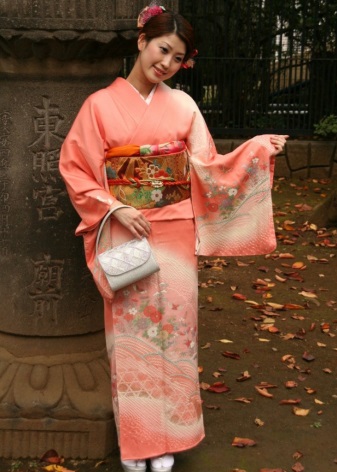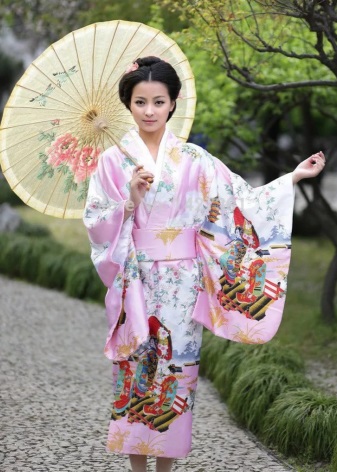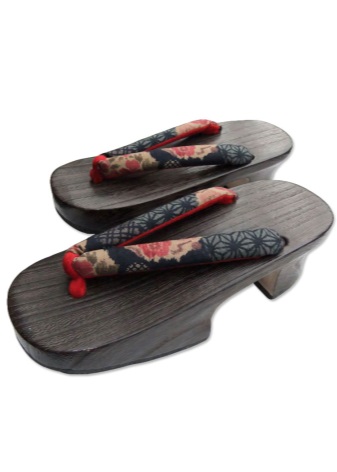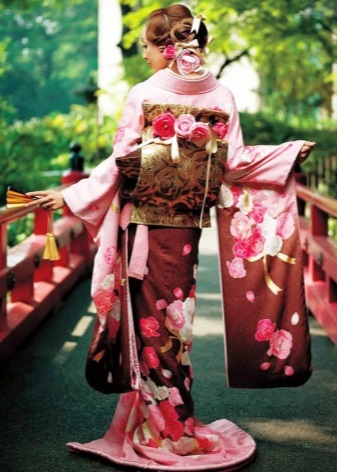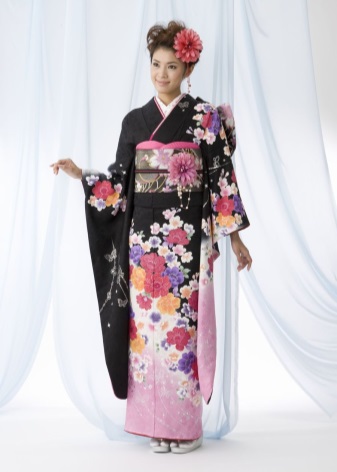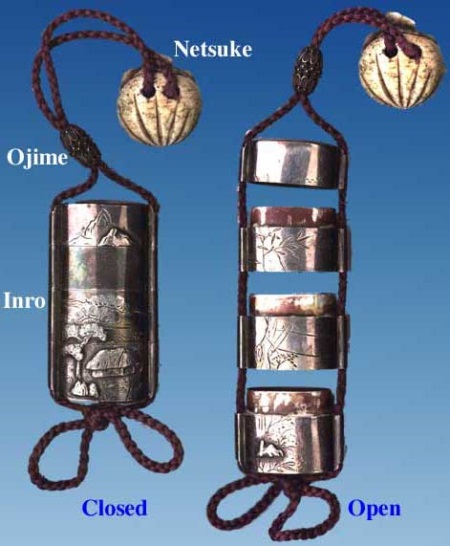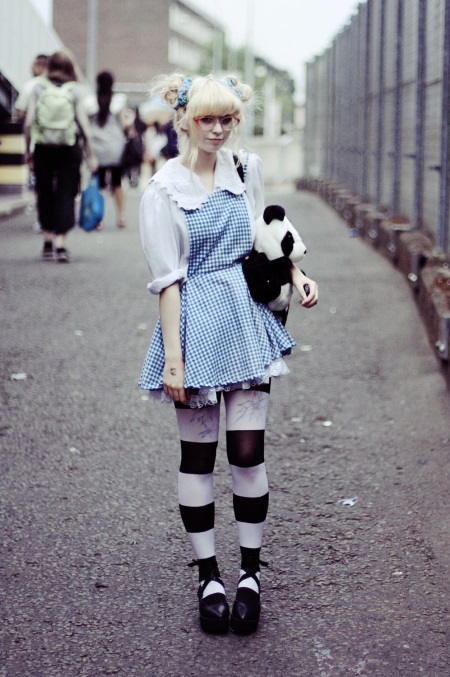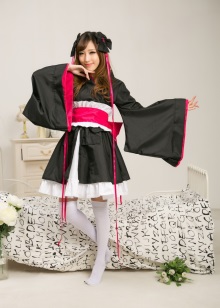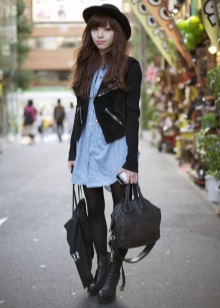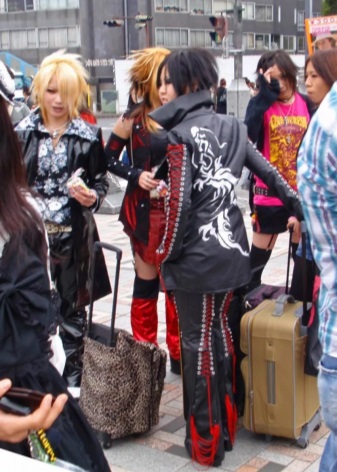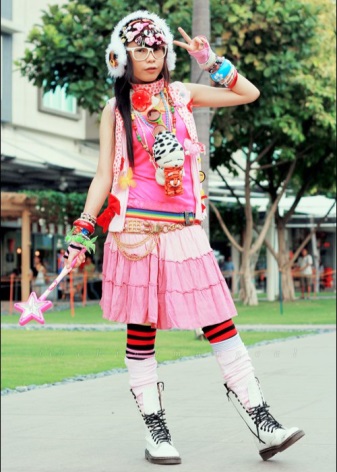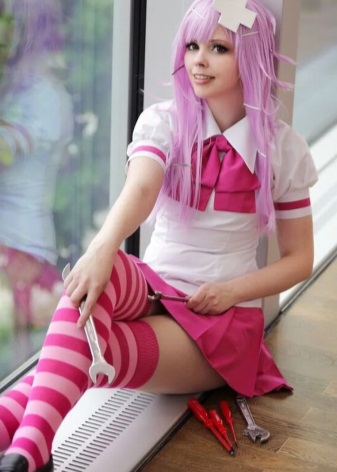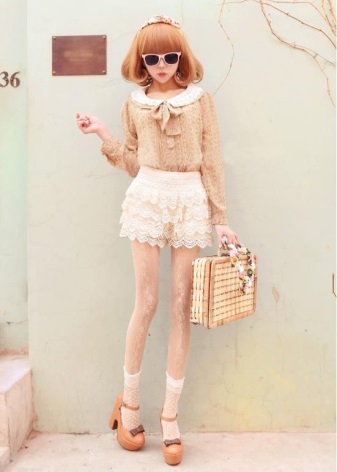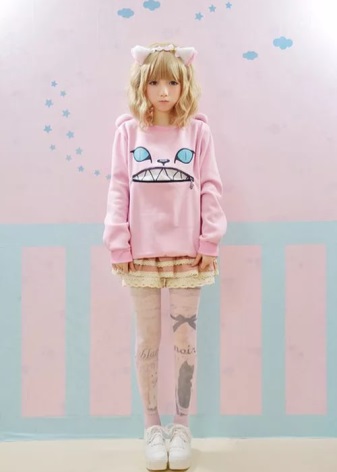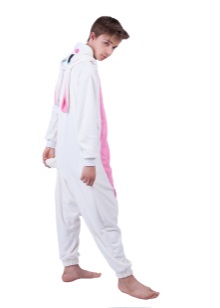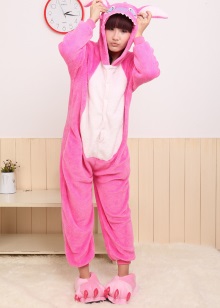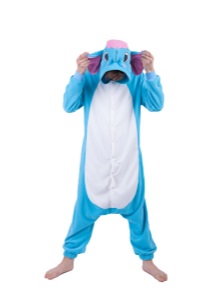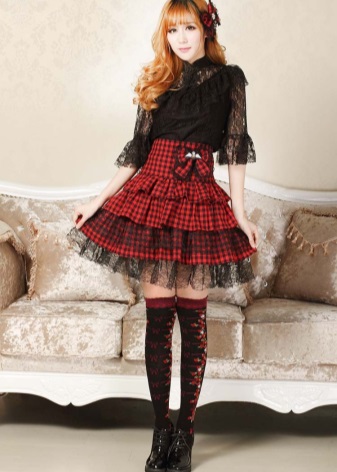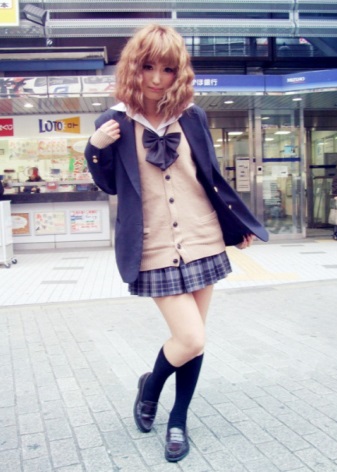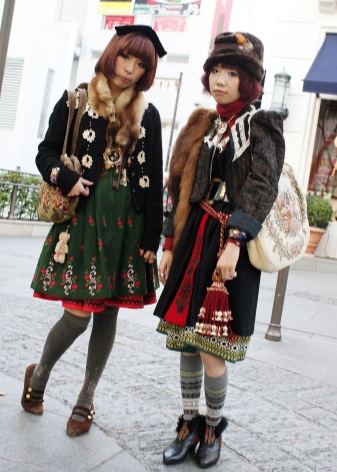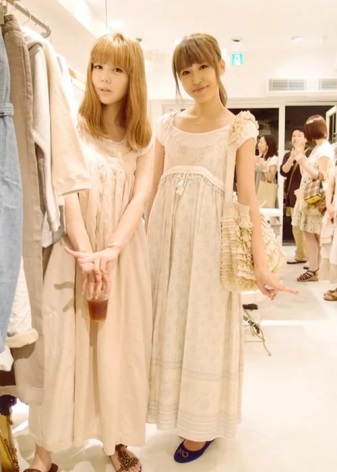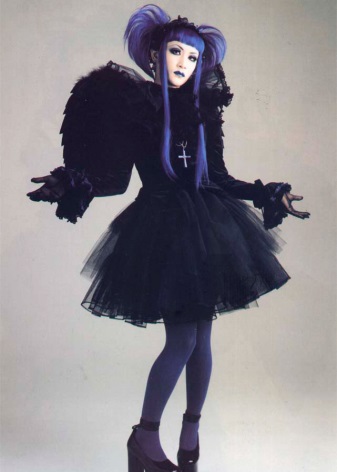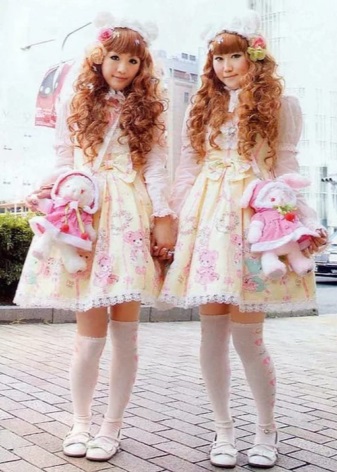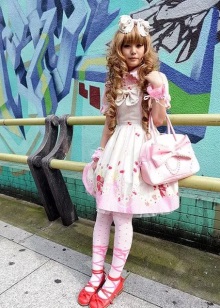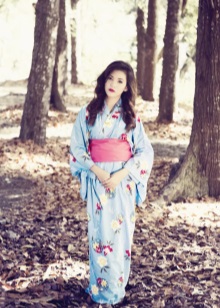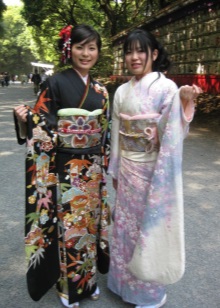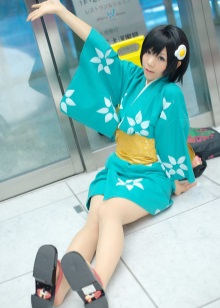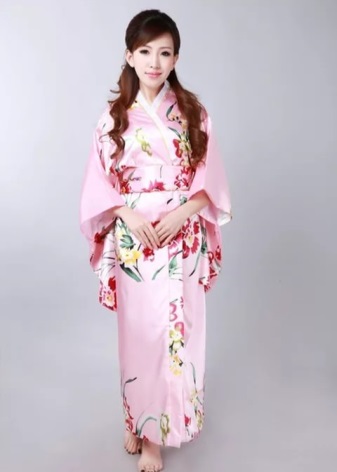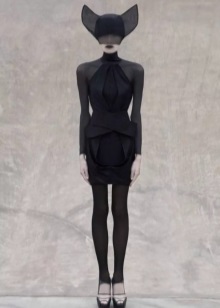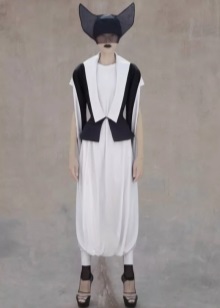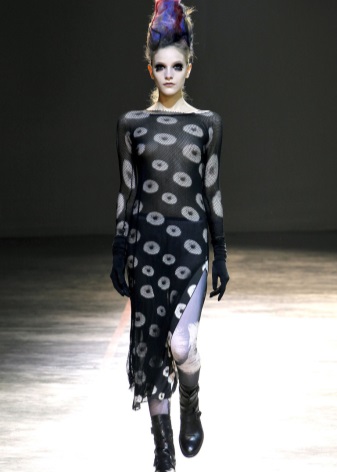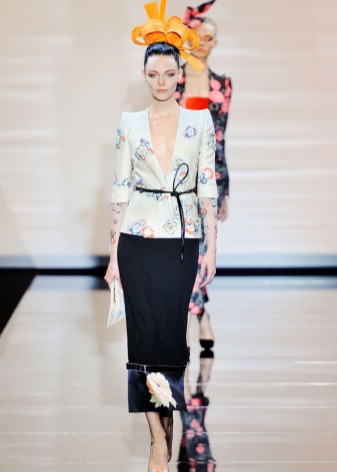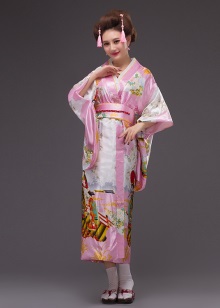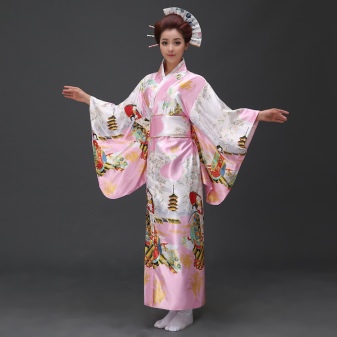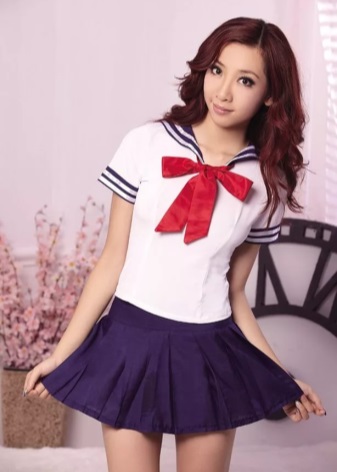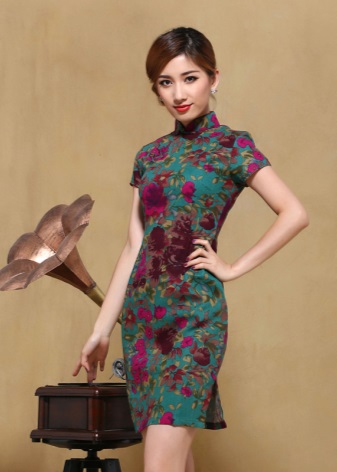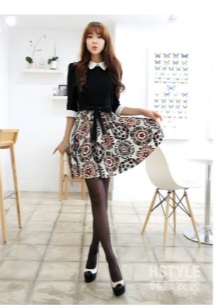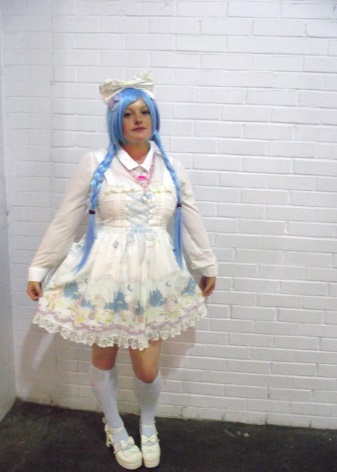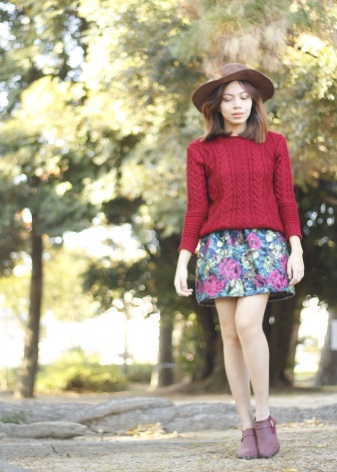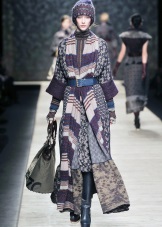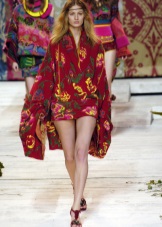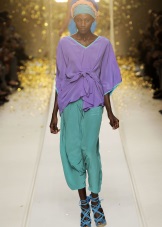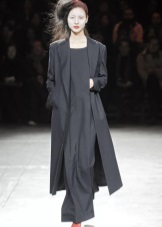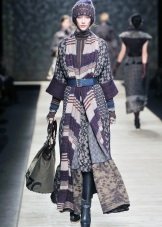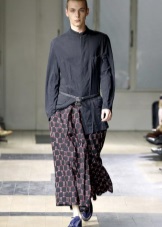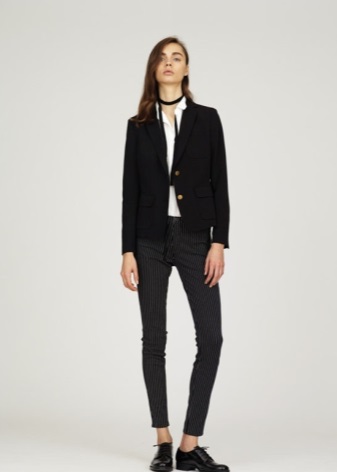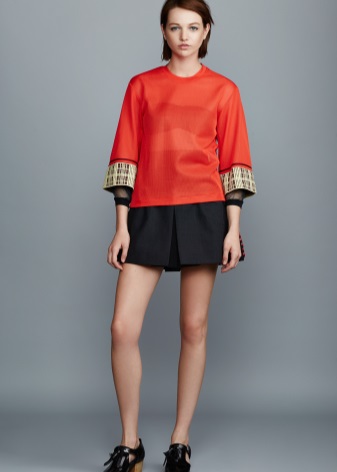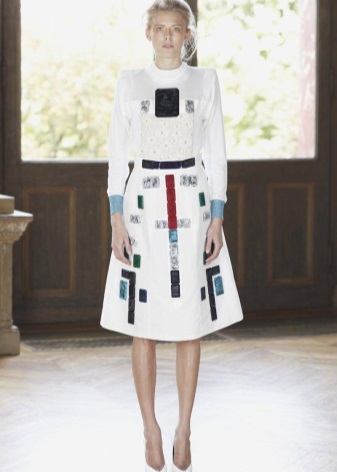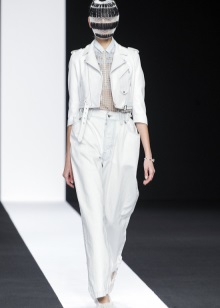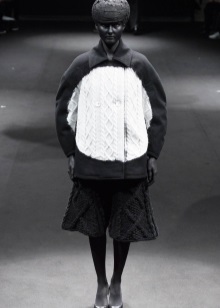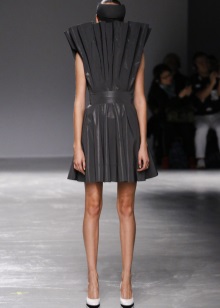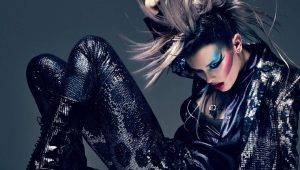Japanese women's clothing
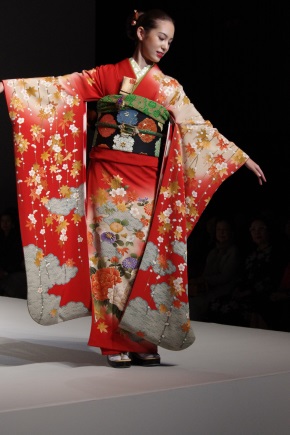
When people mention Japanese clothes, most people immediately imagine kimonos, although modern Japanese girls have long since switched to more practical European-style clothing. But first - something from the history of clothing of this country.
Story
The Japanese national costume has a long centuries-old history. This national dress is very popular today. The main attributes of Japanese clothing are geta, kimono, netsuke and hakama.
Geta
It represents footwear in the form of traditional wooden sandals, having the shape of a rectangle, which are fixed on the leg with the straps running between the toes of the leg.
Kimono
This is the national Japanese clothing (women and men).
Netsuke
To put it simply - these are buttons on Japanese clothes, or you can still say a key-ring counterweight. They are attached at the ends of the laces, which are used to tighten different bags with all sorts of different things - pockets on the clothes of the Japanese are not provided. The material for making netsuke is the horns of animals, their bones, fangs. There are netsuke and wood, and plaster, and made from any other convenient material.
Hakama
In appearance, this clothing is very similar to the national Ukrainian wide trousers that men wear. Hakama is casual wear for Japanese men.
Japanese clothing styles
The end of the last century in Japan was marked by new unique styles and fashion trends. Time passed, and now the original Japanese style became interesting for the culture of European countries, where it began to spread very quickly.
And our country is also no exception in this regard, and we have quite a few people who want to dress extravagantly and brightly, and Japanese clothing in this regard is the best that can be. Here are just some of the most outstanding styles of Japanese fashion:
Visual kei
In Russian, this literally means "visual style", it is based on Japanese glam and rock. What stands out is the bright makeup and the three prevailing shades - black, red and white (and not only in clothes, but also in make-up), rock attributes, leather and metal elements. This style has something in common with emo friends we know - and long bangs, and dark clothes. But Visual Kei has differences inherent only in this style - its admirers love to surprise, but because their faces are decorated with bandages, they have breathtaking lenses inserted in their eyes, they will put on a cylinder, then a corset (or all together) them and faces are written with all sorts of arts.
Decora
This style is suitable for those who like to adorn themselves. A person dressed in this style may still not be visible, but his approach is already audible - it will be jingled on all kinds of key chains, badges, beads, bows and it is still unclear what. Such people decorate themselves like a Christmas tree, and the one who laughs at them will argue that he simply does not understand anything in fashion.
"Cosplay"
This direction of Japanese fashion can be translated as "costume game." It is suitable for those who are in love with anime and computer games. Among the Japanese youth, this topic is very popular and almost everyone has some of these heroes, whom they will emulate in everything, including, of course, in appearance. There are also cosplayers in our country, just don’t think that they imitate our Cheburashka or the hare from “Well, wait a minute!” - they also choose Japanese heroes of cartoons or computer games.
Kawai
The style "Kawai" is always associated with something touching, infantile, the predominance of pastel tones - pink, salad, sky-blue and other similar ones, with all sorts of cute bling. Here you can draw some kind of parallel with the style of Cosplay, but in this case it is customary to imitate cute children's characters - animals or toys, soft and fluffy. Hence the name that translates as “sweet, touching”.
Kigurumi
This is the name of comfortable, catchy and cute costumes, which is difficult to treat indifferently.The Kigurumi costume is soft and fluffy, representing one or another animal. Previously, they were used only as an advertisement, at a holiday for children or at a thematic party. And over time, this style has become a fashion trend, and now it is used as a costume for a carnival, and as a homemade pajamas.
Harajuku
One of the Tokyo districts became the place where this style originated, and that was its name. This area is rich in fashion stores, and they sell a lot of stylish teen clothes. Harajuku style is characterized by bright colors in clothes, from neon-pink to bright purple, a lot of accessories, vintage in motley and unusual decorations and contrast in shades. Another name for this style sounds like Tekenokozoku. Now there is a shop whose name is similar to the style: Takenoko, and this is the main supplier of clothing for those who cherish the Harajuku subculture.
"Lolita"
This style is welcomed by the ladies who want to preserve freshness for many years, and it does not matter how old they really are. This Japanese style can be called, perhaps, the only one, where there are no flashy and catchy colors, and decorations are presented in quite adequate quantities. The main thing for this direction is to preserve the femininity of the image and its harmony, therefore the dress is decorated with delicate frills and ruffles, hairpins and bows, flowers, hearts. Hairstyle of such a girl will consist of soft curls, and a pretty umbrella can complete her image.
Ko gal
This style will also help girls and women to look young longer, but the essence of the image here is a bit different. A fan of this style can be recognized for her unimaginably short school skirt and others, emphasized by children's little things. In addition, this image will not be complete, if not discolored hair.
Marie gerl
Russian words such a style is called "Girl from the forest thicket." This Japanese style is distinguished by its harmony, and the range of colors and accessories is similar to the French “Provence”, feminine, delicate and romantic. The clothes here consist of multi-layered outfits and cute pastel-colored dresses. Lace, frills, delicate flowers in drawings and a small cage are also required. Cosmetics in this image do not use at all or use quite a bit. Accessory is also a minimum, most often it is gold-plated jewelry or leather.
Anime
In the youth environment, anime fans, thanks to numerous exciting Japanese cartoons, very much. Japanese animators couldn’t even imagine that the unprecedented and unique combinations in the clothes of their heroes would create such a sensation in the youth fashion of the entire planet. Anime is not Cosplay, where the style is to copy the clothes of your favorite character, here everything is done with a broader scope and democratic views.
Clothing should only make a hint of a favorite character or a combination of several images at once. Although this, of course, related styles. Anime - extravagant style, enchanting and with a hint of sexuality in a suit, and therefore he can not but inspire fashionable women who dream of a unique bow.
Yukata
The traditional style of kimono is in demand where there is a place for the ancient traditions of Japan. This may be a tea ceremony, the creation of ikebana calligraphy. Such an outfit will also come up on the day of the marriage, for a funeral, for a graduation party, for the celebration of adulthood. But the yukata is a very popular kind of kimono, without which in the summer - well, just no way. This is the easiest version of kimono, it is considered summer.
Yukata is a cotton garment that is customarily worn on a naked body. Its color depends on age - the younger the girl, the brighter the color of such a kimono. The accessories in this case are flowers that decorate hair, brooches and pins with flowers, a belt in the shape of an obi or sash bow, a necklace made of pearls, earrings, and bracelets.
Colors
The Japanese are a special nation, and the fact that for us is just a color, for them there is also a feeling that can be characterized:
- iki - sophistication;
- sibui - restraint;
- Hannari - joy.
Red with white is something that has been cultivated since antiquity. In modern fashion, such colors are used as the basis of style:
- black
- white;
- red;
- pink
- orange;
- gold
- indigo
- and sometimes green.
The most popular colors include vegetable prints with Japanese themes, prints with hieroglyphs, flowers, butterflies, birds and landscapes of forests on mountain slopes.
Cut
Japanese national costume has been forming for more than one century. He could somehow transform, concretize, change styles and silhouette, but the principle of cut remained constant.
The Japanese costume takes into account not only the anthropological features of the figure, but also the system of proportions, which relates to the parameters in the elements of the costume. For example, “trimming” a female figure to aesthetic perfection is possible with special techniques used under the lower kimono.
The fashion of the new season is the Patchwork technique, which is considered the most striking innovation, and almost all famous designers agree with this statement. At the same time, fashion masters predict Patchwork for more than one year of popularity.
Fashion 2019 for girls
The Japanese are also in vogue ahead of the rest: they often have unexpected and rather bold decisions in clothes. For example, the cute image of a modern Japanese schoolgirl provides for the presence of different types of bows, boots with stilettos, mini-skirts of several layers and large knitted hats with pom-poms. And to complete the image, on the phone you need to hang a voluminous toy, grow and lighten the hair, lengthen the cilia and how to draw eyes.
Casual dress for Japanese fashionista are bright floral colors and large prints. The plot can be purely Japanese - with dragons, with cranes, with sea horses, with Indian animals (turtles), with Calvinka the fairy from heaven, or with a bird holding a branch in its beak. For school Japanese fashion today is a combination of styles.
What is the trend:
- among the Japanese youth there are many lovers of culottes (these are wide pants, the length of which can be any);
- Tops with open shoulders are popular, although only the most determined girls are wearing them so far;
- bags and baskets, woven from the vine;
- sneakers with converse;
- maxi skirts and pleated skirts;
- spacious cut suit or dress and pants made of natural fabric;
- top underwear over a T-shirt;
- a dress with thin spaghetti straps over a T-shirt;
- a bare neck with a bare top of the back is very beautiful and sexy;
- cardigan;
- a handkerchief (on the arm, on the leg, not on the neck, on the bag);
- hats;
- tops without sleeves.
Japanese women are attentive to fashion changes and in this they are helped by numerous magazines that teach combination rules and other basic fashion techniques. For high school students, there is a fashion for the form “Gakuran” - military style for boys and pretty sailor suits for girls. Gakuran - derived from “gaku” (student) and “wounds” - Holland. For the Japanese, Holland is simply a Western European country. So it turns out that the “Gakuran” is the student who is dressed in a Western way.
Popular brands
The Japanese look at life in a special way, and this can be seen in the example of collections from famous designers of clothes for both men and women. The same can be said about the following Japanese manufacturers of world famous clothes:
- Blackmeans;
- TaroHoriuchi;
- Tomorrowland;
- Beams;
- BeautifulPeople;
- YasutoshiEzumi;
- KiNoe;
- Remi Relief;
- Kolor;
In the 1970s, Takada Kenzo and Isey Miyake tried to cooperate with the fashion industry of the West, and in the future they had a lot of fame. Their creations can’t be called ordinary, for creating clothes, they used rubber, paper, and iron. By 1981, the world community became aware of two more designers from Japan, these were Rei Kawakubo and Yoji Yamamoto, who soon became the conquerors of the Parisian catwalk.
The public in Paris did not have time to deviate from the experiences associated with the extraordinary ideas of Yoji Yamamoto as a new shock - the work of a fragile girl from Japan Rei Kawakubo and her company Comme des Garcons (literally: boys as boys). These were models of a completely new type, distinguished by rigor and geometry. They are called "post Hiroshima look".
The most famous brand in Japan is Uniqlo. This company is characterized by restraint and conciseness of the silhouette, neutral colors and high quality material. From year to year, Uniqlo concludes contracts for cooperation with other eminent firms, and every year the world learns about its new extraordinary finds.
Toga - another Japanese brand, designer - Yasuko Furuta. They are presented with chic lacquered leather jackets, a high pencil skirt, and dresses that have a high waistline. The main thing in this clothes is symmetry, brightness of colors and prints.
The creator of the Anrealage brand is Kunihiko Morinaga, a young designer who does not have talent. The public has known him since 2006, when he was recognized by venerable critics. Brand feature is abstraction and geometric prints, as well as monochrome products.

